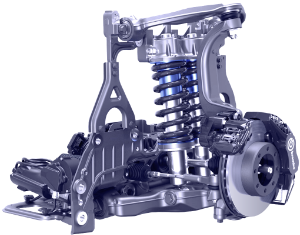Frame-Off EV RestoMod
1973•1978 GMC Motorhome
My interest is not in building a one-off grafting of salvaged EV car systems onto vintage ICE vehicles; instead, I seek to create something that both meets my needs and contributes to the DIY EV development community.
Anyone of like-mind is more than welcome to collaborate in the technical ideation, design, proof-of-concept of an open-source, open-hardware skateboard with drive modules that are not in-wheel, but in-wheel adjacent, similar in concept to REE Automotive’s REEcorner ― almost as compact as an in-wheel design, but without the unsprung weight penalty.

Employing easily sourced and customized aftermarket suspension components manufactured to repair vehicles with the largest production volume over the greatest period of time, guaranteeing relatively low-cost and wide availability. Resulting I hope in a platform easily adaptable to both used and newly fabricated bodies for medium to large size vans, trucks, buses, and motorhomes where weight, distance, and economy are the priority, NOT the need for speed.
Auxiliary Power Unit (APU)
In addition to regenerative braking at all 6 wheels, I plan to heavily customize and computer-control – two multi-fuel, generator-inverters with a capacity of 11,000 watt peak, 8,500 watt running output to serve for range extension and emergency house power. For these, I have designed two ballistic armored cabinets mounted to the skateboard towards the rear, secure and externally accessible; each with fire suppression, and both passive and active noise control (ANC).
PV Solar Power
A typical 26’ GMC Motorhome has a 200 sq. ft. roof span that cleared of protrusions and mounted with the theoretical maximum number of quadruple multi-junction PV panels (depending on manufacturer), under ideal conditions would generate approximately 4,000 watts of charging power.
Cascading Hybrid Battery System
Fast-Charging Supercapacitor Buffer + Lithium-ion (Li-ion) + Lithium Iron Phosphate (LiFePO4).
I hope to get my hands of the new generation of Li-ion by CATL, and substitute LiFePO4 chemistry with Sodium-Ion battery technology.